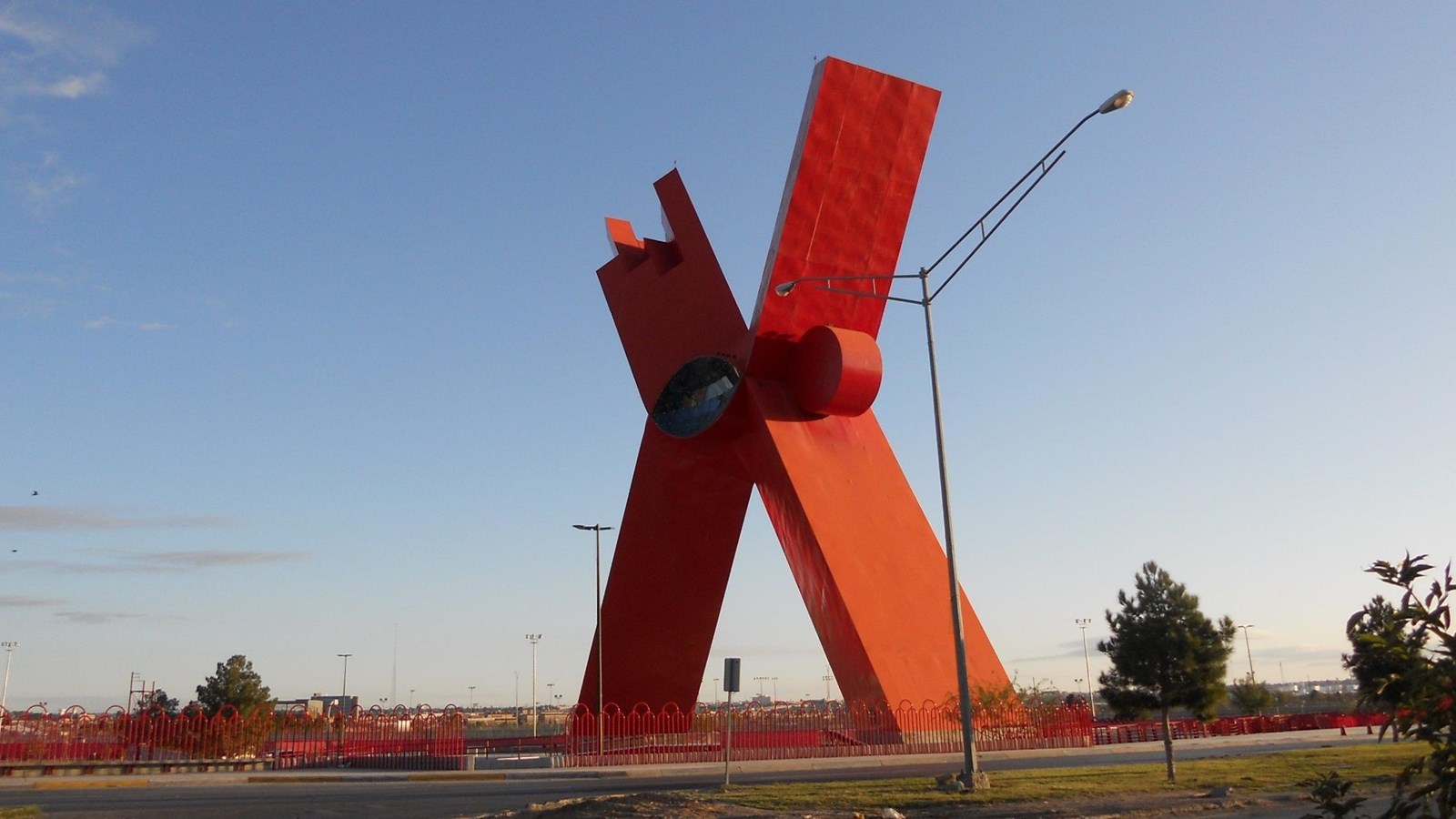Last updated: September 11, 2024
Place
La Equis

As you look south toward Ciduad Juarez, you may notice a big red “X”. Established on May 24, 2013, The X, otherwise known as “La Equis” sits along the Rio Grande, near Parque Federal El Chamizal, as a symbol of cultural pride. The sculpture also displays as a tribute to Presidente Benito Juarez. The “X” also resembles the Nahui Ollin symbol, which is known as the 5th sun in Mexica culture, amplifying the connection to Indigenous roots in Mexico. The artist, Enrique Carbajal, also known as Sabastian, intent was to represent the pride of the people of the city, using the “X” symbol as a cross of culture between Indigenous and Spanish roots.
Before the sculpture, the land that “La Equis” stand on was once north of the Rio Grande, making it part of El Paso, Texas. Cordova Gardens was a new community that was built after World War II. Cordova Gardens was the home of many veterans, blue collar middle-class Americans, and Mexican immigrants trying to take advantage of full-time employment that was booming in South El Paso. Unfortunately, once the Chamizal Treaty was signed and Land would be given back to Mexico, 4,500 residents were to be compensated and relocated.
During the federal appraisal of the neighborhood, William E. Wood would provide his firsthand observations of Cordova Gardens community. Wood observed that Cordova Gardens homes were post World War II infrastructure that estimated about a $5-6,000 value when built. Lots were 50 X120 feet with 900 to 1500 square foot living spaces. The homes were well kept, with the neighborhood being very close knitted. The community had its necessities, such as a grocery store, school, work, and family, all being close in distance. Cordova Gardens was proud community that was primarily populated with homeowners that were Mexican and of Mexican decent.
Today, La Equis is enjoyed by the residents of the borderland through annual festivals, concerts, and celebrations. As a symbol of cultural pride, we remember the hardships and resolutions that the city of Juarez has faced and overcome. It is reparations to Mexico with the return of land from the United States government. Take a moment to reflect on the community of Cordova Gardens whose homes came at a price of fostering goodwill to achieve resolution over a 100-year boundary dispute between the United States and Mexico.
